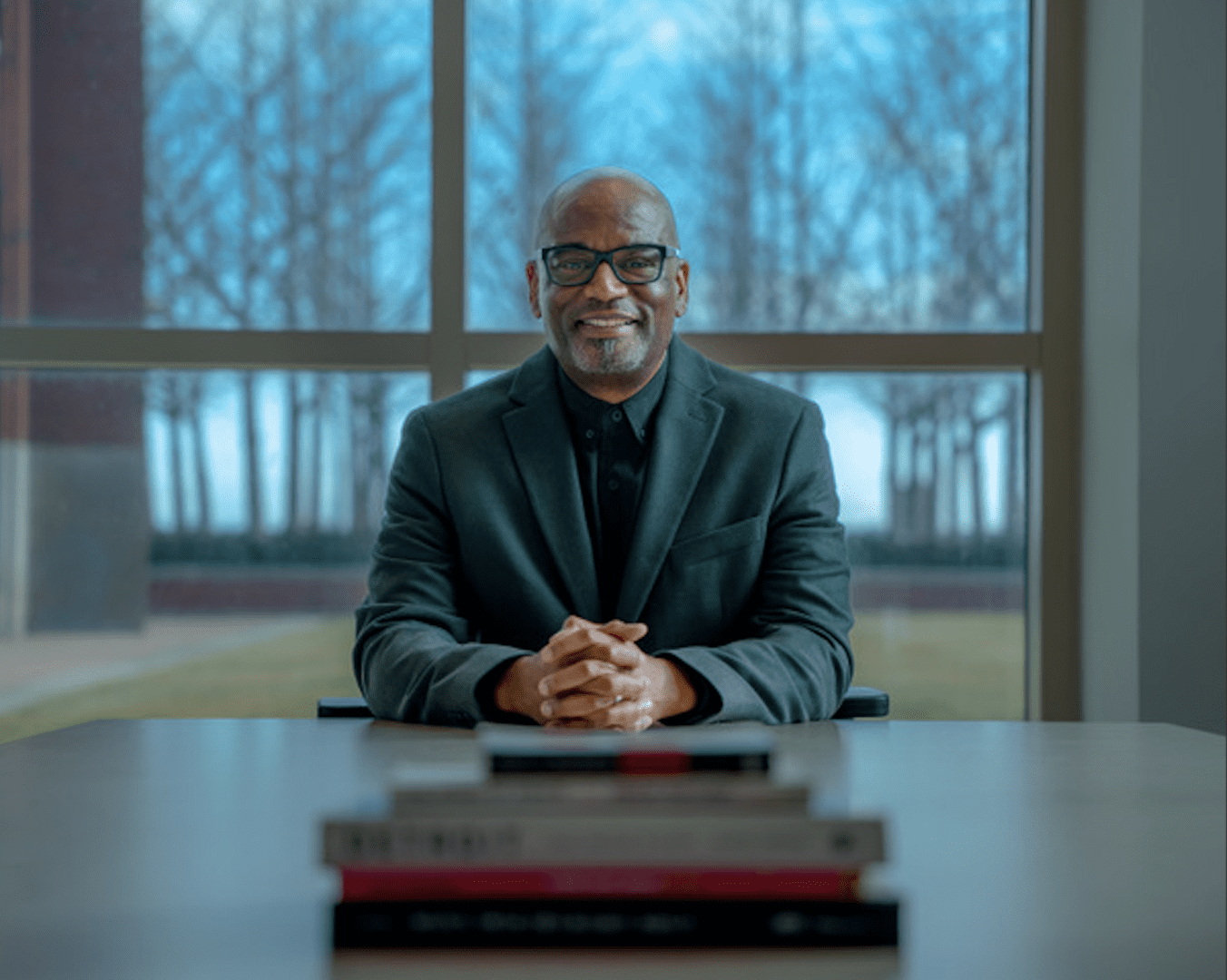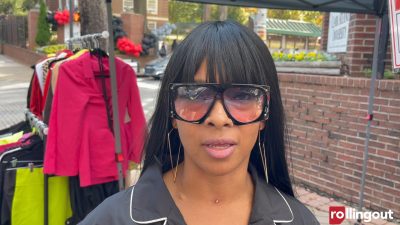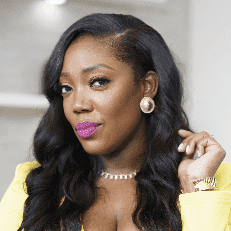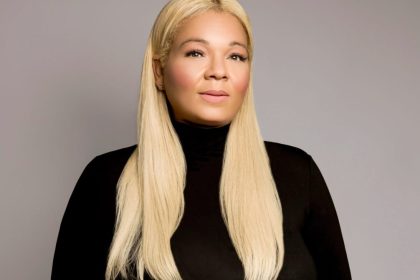Renowned as a trailblazer and visionary in the world of footwear design and education, Dr. D’Wayne Edwards, the esteemed President of Pensole Lewis College in Detroit, has etched an indelible mark on the industry. His remarkable journey, which started at age 19, was catalyzed by an innate gift for drawing and an unwavering passion for shoe design.
From humble beginnings at LA Gear, he swiftly ascended, challenging the status quo with innovative suggestions that ultimately shaped the brand’s trajectory.
Now, leading Detroit’s only historically Black college, Edwards has revolutionized the learning experience, blending industry expertise with a commitment to nurturing the next generation of Black designers.
An industry luminary recognized by Complex as one of the most influential figures in the sneaker realm, Edwards continues to redefine the intersection of fashion, trends, and design. Follow his inspiring journey at @plcDetroit and witness the unveiling of his impactful legacy on the Detroit Riverfront at his ribbon-cutting on February 28.
In this episode of Design & Dialogue, we spoke more with Edwards about his incredible journey.
At age 19 you got started at LA Gear, a footwear company that is long gone. Tell us about your journey. How did you become interested in footwear design at age 19?
I grew up on the West Coast in Inglewood, California, born with the gift to draw anything I could see. And as a young kid, probably like 10 or 11, I was always drawing like my favorite sports figures. One day I started drawing the shoes of the sports figures only, and got stuck there. So I would say, I started drawing shoes at around 12 and that just became kind of a fascination because it was it was difficult to draw. I was so used to perfecting everything that I was drawing, and I couldn’t perfect that. So that just became my obsession.
Then, that turned me into wanting to be different than everybody else in high school by customizing sneakers just to match my basketball uniform in the early ’80s.
Then, that turned into wanting to design shoes for Michael Jordan and Nike, and that didn’t happen. But being the youngest of six kids raised by a single parent, I knew college wasn’t going to be in my future. And so my goal was to just get out of Inglewood alive and graduate from college and hopefully get a decent job. Then live a somewhat normal life.
I ended up getting a temp job at this this footwear company called LA Gear, but my job was to file papers. While I was there, I was like, well, I’m at a footwear company; it’s not Nike, but it is a footwear company. Let me see if I can get a job. And so they put these wooden suggestion boxes in every department of the company, looking for employee feedback on how to make the company better, save money this way, you should do this and that, and so on. My suggestion was shoes that I designed, that I thought LA Gear should look like. After about six months of doing that every day, the owner of the company called me into his office, had all 180 of my sketches, and offered me a job at 19 years old.
Well, congratulations on that, because again, it started your trajectory on the path that you’re currently on. You have a ribbon cutting coming up. Can you share some highlights and or key moments from the event that you think will be significantly intriguing?
We reopened Detroit’s only historically Black college almost two years ago, formerly called Lewis College of Business. Founded by this amazing black woman, Violet T. Lewis, in 1928, she borrowed $50 and some typewriters, and started her own college to educate Black women on the skills they needed to work in corporate offices in the late’20s. That was as simple as it started.
It did extremely well. Detroit asked her to open a second location in 1939. She repeated history; the first Black office employees at General Motors (GM) and Ford Motor Company in Michigan all graduated from Lewis College of Business here in Detroit.
She received their HBCU designation in ’87, making her the second Black woman to found an HBCU. She was a beast, way ahead of her time. The school thrived, but started to decline, primarily because HBCUs have always been poorly funded.
I was made aware of the college in 2020 and contacted the family. It’s been a family-run institution since 1928. I asked them, “Hey, I have an interest in helping you guys reopen the college.”
They said, “Well, we’d be more interested in you acquiring the college than us continuing on.” So, I acquired the college, reopened it as a design and business school on February second of 2022.
Next Wednesday, February 28th, we’re having our official ribbon cutting for our new facilities here in Detroit. You’ll be able to see our new facilities on the riverfront, as well as our brand new sample room that will teach kids how to design and make footwear, sponsored by Foot Locker.
What an amazing accomplishment and an incredible woman in Lewis that forged a path to now reopening the college. What were some of the challenges associated with bringing it back to life?
Well, a few things: We had to write two state bills. One, because there were no state laws around a college reopening. The other one was a state oversight; the state never officially established Lewis College of Business as Detroit’s HBCU, even though the original building is a historical landmark for the state. So, we had to write two state laws. Both of those state laws were approved in two and a half months, clearing the path for us to reopen. Now, we’re going through the traditional educational bylaws and processes to fully reestablish as an educational institution in the state.
Amazing. As the president of the first design-focused HBCU, can you discuss the unique aspects of the college that set it apart from other design programs and HBCUs?
So the first one, I would say, is the faculty. We all come from the industry, working at the biggest brands from Jordan to Nike to Levi’s. You name it. We’ve been at those organizations. We’re all Black. We all have two and three decades of experience and walked away from those careers to give all our knowledge back to our youth. We speak the language of the youth because we all come from the same inner cities they come from. We all grew up broke, but we made lemons into lemonade. We had cereal with no milk. We did all that. So, we relate to the youth because we come from the same places they come from, but we had a talent.
What we’re trying to do is find those gems that are out there and share our experiences with them so they can have a better career than what we’ve ever had before.
To help us do that, much of what we do is in partnership with the largest brands in our industry. We have major partnerships with Jordan Brand, Nike, Pepsico, GM, Versace, Jimmy Choo. We work with all these major brands that our youth buy products from. We partner with them so they can pay for the students’ education for employability. A lot of what we do is completely free. We put them right in front of job opportunities. We train them in the way they will work. When they graduate, they are right in line for internship opportunities immediately.
Such important work that you’re doing in our community. How did your unconventional path shape your approach to design and leadership?
Well, my advantage is what I look like. I’m a Black male, young at the time. I was the ideal consumer. Because of that, I was able to design for myself and others across the country that looked like me. My unique value proposition was being young and connected to the culture, using that talent to create products the youth wanted.
I was an athlete. I played ball in high school, understood basketball, designed specifications to be able to play those sports well, and from a lifestyle perspective, worked with Tupac, Big, Snoop, Dre, in our early twenties. We were doing it for the love of the culture, wanting to be different with impact. We didn’t understand our true value at that time. Those guys were doing ads for free. They just wanted free shoes and clothes. They weren’t charging to be in Karl Kani or Cross Colors ads.
What advice do you have for aspiring designers?
The advice is if you have a skill and talent, don’t let someone talk you out of it, especially yourself. We’re good at preventing ourselves from doing something, making up excuses. What we try to help our students understand is that you have to want success as much as you want something to eat.
Let’s talk about the history you’re making, too. Fifty plus patents, 500 plus footwear styles for iconic figures. How do you balance creativity and functionality when designing?
It’s easy because that’s who I am. That’s who we are. We’re not one-dimensional beings. When we can be our full selves and marry that with talent, we can do anything we want to do. We’re just not always in a position to exercise our full selves where our full creativity can be on display.
Everyday, we have to remind students of who they are and what they’re capable of, by us being physical representations of what’s possible. Our kids can only strive to be what they see. When I grew up in Inglewood, it was like, “Okay, I’m either going to bang, I’m a slang, or I’m a hoop.” Fast forward many, many generations later, it’s damn near the same thing. If that’s what your environment is showing you, then you have a prior probability to move in that direction. What we’re trying to show is the other options. What are those other options that you have by physically showing them that this Black man, this Black woman, has been here? Gave it all away now, trying to give you all the game that she didn’t really get, or he didn’t really get. So, now you can move and surpass whatever accolades we were unable to surpass. They just need someone to give them a directional guidance of what’s possible and the know-how to do it.
Let’s also talk about some of those partnerships that you’ve developed and created with those brands. How do these collaborations contribute to the unique learning experience at the college and how do they help in shaping the curriculum?
The industry has completely shaped the college as a whole. We teach the way you work. We want to be as close to a job before you get the job. The way we teach you is the way you’re going to work. We co-create curriculum with every brand we work with. So, for students working on a Nike project, they’re learning the way Nike works in school. Very similar to how if you have a doctor who’s going to school to become a doctor, they’re practicing before they get the official degree. We’re doing the same thing from a design perspective. But it’s not that difficult to help a kid understand, “Hey? You see, these J’s, you could design those J’s and you can get them for free. You don’t have to pay for them anymore.” Right? That’s not a hard sell.
Receiving your honorary doctorate from Art Center College of Design is very notable. How has this acknowledgment influenced your perspective on the importance of formal education in the design field?
As I mentioned, I was too poor to go to college. I grew up with the yellow pages, this thick book that told you what was only in your city. I didn’t know this school, called Art Center, was in Pasadena, California, which is roughly about 30 mins away from me. I didn’t know it was there, and that is the school. If I could have afforded to go, I would have gone to that school. So, I go on to have a career and retire, and they invite me to teach at that school.
My first time going to a college was actually in a classroom teaching at a college. So, here I am teaching at Art Center. Then Parsons, in New York City, asked me to come to New York and teach, and then MIT asked me to come to Boston and teach, and then I was invited to Denmark and taught there for 4 years. So, here I am: a nontraditional college, educated person, teaching at some of the best design schools in the world. One day, Art Center was like, we admire the contributions you’ve made to the design community over the last three decades, and we would like to honor you with an honorary doctorate and making Art Center your official college home. I’m the only Black person, in their almost 100 year history of an institution, that has received a doctorate from that school.
Can you share more about JEMs, the vision behind it and its role in nurturing that next generation of Black designers?
In 1883, a Black man by the name of Jan Ernst Matzeliger, invented the modern-day shoe-making process. His mother was a slave, his father was a slave owner. And with no formal education, he wrote his own patents, built his own machines, and obtained a patent to transform shoe making from 50 pairs a day to 700 pairs a day. Unfortunately, he passed away four years after receiving the patent, so he could never truly benefit from his invention, but he was a part of history that disappeared.
When I entered the industry in ’89, I was only the second Black designer in the whole industry, and we’ve only seen a 3% growth ever since that time. We’re still massively underrepresented in the footwear industry as designers.
I was proposed with the idea of creating a footwear factory. I said, “Alright, I’ll do it, but it needs to only design products for people of color because there’s very few of us who have our own companies and very few of us have our own brands.”
When creating the name of the factory, I wanted to honor Jan. I took his initials, and it spells JEM. I added the studio to it, making it Jan Ernst Matzeliger Studio, short for JEMs. I like to think all Black people are gems. We just need to be polished, and once we get the knowledge we need, we shine. That’s what JEMs is about.
You were recognized in 2019 by Complex as one of the most influential people in the sneaker industry. How do you perceive the evolving influence of sneaker culture on broader fashion, trends, and design?
I think sneaker culture completely has changed fashion as a whole. Overall, you story-tell. You can tell a lot about people by what they got on their feet. The influence of sneaker culture has gone beyond just wearing things on the court. It’s bled into high fashion, it’s bled into low fashion. You can’t go anywhere without sneakers being socially accepted as part of your everyday uniform. Even in corporate offices, it started off as casual Fridays; now, it’s every day.
The influence is off the charts. We’re talking about a hundred-plus billion-dollar industry that largely, I would say, was birthed from us.
Your journey has been simply remarkable, from an entry-level designer at 19 to the President of PLC Detroit. What legacy do you hope to leave in the world of footwear, design, and education?
Well, it’s not for me to define. I think that’s up to me and what I do. Let people talk about it. But I would hope my legacy is beyond footwear design. I hope my legacy is purely around our people, creating a better life for themselves and their families. If I can do that through design and through business, and here in Detroit through Pensole Lewis, that’s the goal. I’ll let people decide what they want to write, but I just know what I want to get accomplished, and people can decide what they want to write about.
Please tell us about your event again before we go.
The ribbon-cutting is February 28. I would love for Detroit to come out and see our new building and our sample room. Detroit is the most creative city in America, and it should be the only destination for a historically Black college focused on creativity. It has to be here in the city of Detroit.
We will have the governor and the mayor in town, and they’ll be speaking. I just want the city to show up so they can show the state and the city how important design is to this city and, more importantly, how important Black people are to the creative community that exists in this city.
Where we can follow you?
At PLC Detroit (@plcDetroit). Thank you very much. Appreciate the opportunity to speak to you and your audience as well.












